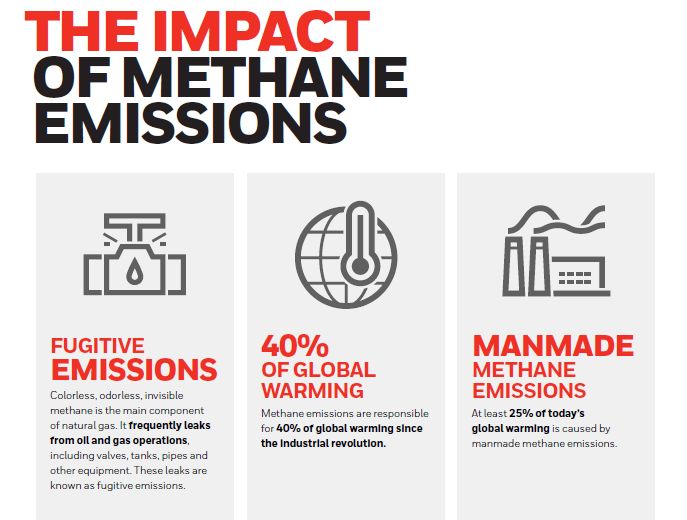-
Global
-
Africa
-
Asia Pacific
-
Europe
-
Latin America
-
Middle East
-
North America
- |
- Partners
- |
-
Currency:Localize your Content
You can set your preferred currency for this account.
Choose a Currency
Currency- CHOOSE YOUR CURRENCY
Update Currency
Changing Currency will cause your current cart to be deleted. Click OK to proceed.
To Keep your current cart, click CLOSE and then save your cart before changing currency.
-
Select Account
Switching accounts will update the product catalog available to you. When switching accounts, your current cart will not move to the new account you select. Your current cart will be available if you log back into this account again.
Account# Account Name City Zip/Post Code CANCELPROCEEDMy Account
-
Global
-
Africa
-
Asia Pacific
-
Europe
-
Latin America
-
Middle East
-
North America
- |
- Partners
- |
You are browsing the product catalog for
You are viewing the overview and resources for
Methane is a potent greenhouse gas and the primary component of natural gas. Emissions of methane contribute to air pollution and are a powerful global warming agent. In its first twenty years after being emitted into the air, methane has more than 80 times the global impact of carbon dioxide. Therefore, reducing methane emissions is considered the quickest route to reducing climate change. The largest source of methane emissions in the U.S. and globally comes from the oil and gas industry.
The problem begins when unburned gas escapes into the atmosphere creating fugitive emissions. Fugitive emission can occur throughout the natural gas supply chain, but it is difficult to determine the exact extent and length of the escape prior to actions being taken to repair. If not better mitigated, methane emissions could undermine the advantage natural gas offers and result in major issues for the climate. Limiting methane pollution from the production and delivery of oil and gas is a key element necessary to slowing the rate of climate change.
Technology advancements in methane emissions monitoring through optical gas imaging, like Honeywell Rebellion, can provide continuous monitoring and quantification of a site for quicker, more reliable detection of methane emissions.


Learn more about methane emissions and how your company can take steps to reduce them.


Infographic: Understanding the impact of methane emissions
Sources
- https://www.edf.org/media/climate-scientists-record-extremely-high-methane-emissions-across-gulf-states-mexico
- https://www.edf.org/methane-detectors-challenge
- https://www.edf.org/climate/methane-studies
- https://www.edf.org/climate-impacts-methane-emissions
- https://www.edf.org/blog/2020/08/10/what-science-saying-about-methane-pollution-and-how-world-finally-listening
Let's Connect!
Sign up to receive exclusive communications from Honeywell including product updates, technical information, new offerings, events and news, surveys, special offers, and related topics via telephone, email, and other forms of electronic communication.
Copyright © 2025 Honeywell International Inc
Maximum File Size
Maximum Files Exceeded
Due to inactivity you will be logged out in 000 seconds.
Maximum File Size
Maximum Files Exceeded
You cannot access this page as this product is not available in your country.

